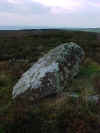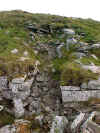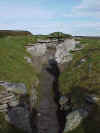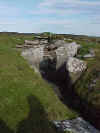 | Caithness.Org | Community | Business | Entertainment | Caithness... | Tourist Info | Site Map |
• Advertising • Chat Room • Contact Us • Kids Links • Links • Messageboard • News - Local & Scottish • News - UK & News Links • About / Contact Us • Submissions |
• Bookshop • Business Index & News • Jobs • Property For Sale • Property For Rent • Shop • Sutherland Business Index |
• Fishing • Fun Stuff • George, The Saga • Horses • Local Galas • Music • Pub Guide • Sport Index • What's On In Caithness |
• General Information • B & Bs • Backpackers • Caravan & Camping • Ferries • Getting Here • Holiday Letting • Hotels • Orkney • Pentland Firth • Sutherland • Taxis |
| N E W S F E E D S >>> |
|
Archaeology Week - Caithness
Programme This was the last of the days for Archaeology week in Caithness - part of a Highland Wide week of events. The day was led by Gordon Wilson of Caithness Field Club. Field Club members know this area very well from outings led by Gordon in the past. Over the years Gordon has built up a very detailed knowledge of the history of the area. Starting out at Whaligoe he led the group past the old Station House which still stands as evidence of the Wick - Lybster Railway. However just round the corner in the first field Gordon pointed out what many people miss on their way to the Cairn of Get - the platform and track used by the former railway. The pictures below show the platform and line of the track. Starting the walk here
and then moving up the hill Gordon led a circular tour of the hill area
pointing out the water courses that took Then on to the Warehouse which gives its name to Warehouse Hill and was on the route of the old drovers track. There is a field or enclosure surrounded by a drystane wall which has been built on top of an earlier wall probably iron age. The older wall is still visible and is clear because the stones are place vertically. This was the way walls were built thousands of years ago. The later wall was just added using the line as it already enclosed an area which because of the small hill gave some shelter to animals enclosed.
Apart from the Cairn of Get other stone circles and cairns were visited. In a very small area there is a huge amount of evidence for habitation in the area covering iron age, neolithic and many periods up to the present day. The area is probably at one of the lowest in population terms now than it has been for many hundreds if now thousands of years. |
||||||||||||||||||
|
|
||||||||||||||||||
| Along the way Gordon pointed
out many other interesting features such as the Lime Kilns. The walk
also passes a small loch which has fish and in summer has an increasing
reed bed which is threatening to choke the whole water surface. This
had died away for the winter but returns each spring. Caithness Field Club Winter Programme |


































